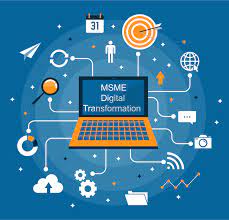Launched in September 2021, the Reserve Bank of India’s Account Aggregator framework has the potential to be a powerful tool in streamlining digital lending. An account aggregator is a data-sharing protocol between financial institutions, such as banks, NBFCs, insurance companies etc. They are RBI-licensed digital entities which require consent from customers to retrieve their financial data from a financial information provider (FIP) to share with a financial information user (FIU).
The account aggregator (AA) ecosystem has the power to transform the digital lending market in India, which grew from around USD 9 billion in 2012 to close to USD 110 billion in 2019. The account aggregator ecosystem could pave the way for an open banking system in India as well as making a range of financial products more accessible to a wide range of customers.
How Does The AA Framework Work?
The AA framework hinges upon the customer’s consent: the customer’s data can only be provided by the FIP to the AA when the customer grants their consent. The flow of information is:
- Customer applies to FIU for a loan
- FIU raises s request for customer’s financial information with AA
- AA sends the customer a request for their consent to obtain and share their financial information
- If consent is granted, AA requests FIP to share the relevant information
- FIP shares the data in an encrypted format with AA
- AA shares the encrypted data with FIU
- FIU can now use the data to decide whether to grant the loan.
The financial information cannot be accessed by anyone except the relevant FIU, as it is shared in an encrypted form by the FIP. The AA cannot view the information, and as per RBI guidelines, cannot store, sell, or otherwise process the data. This ensures that sensitive financial information remains confidential and can only be accessed by the relevant party after the customer consents.
Advantages of the AA Framework
The AA framework comes with a number of advantages, especially for the MSME sector.
- Increased access to finance: As the credit process becomes more streamlined and digitised, more and more people can apply for loans. The traditional loan process is dependent on collaterals and strong credit scores, while digital lending uses other markers such as balance sheets, cash flow, GST information etc to evaluate the creditworthiness of the customer. Moreover, the sharing of information through digital channels ensures that the process is faster, and disbursal of funds can take place more quickly than through traditional channels. This makes digital lending a better option for individuals and MSMEs.
- Improved digital security: Countries around the world are investing in improved digital security measures to safeguard customer data. The AA Framework is no different. By hinging the sharing of data on the customer’s consent, as well as ensuring that the data is shared in an encrypted form, the AA Framework has prioritised the security of customers’ financial information. Furthermore, since the process is system-driven, there is a very low chance of fraud by any of the participants.
- Data-backed lending decisions: The use of alternative financial information to make lending decisions, along with the use of new-age intelligent technologies, can help prevent financial delinquency and reduce the number NPAs in the economy. It can also help lenders offer their customers more personalized loan products for their needs, as well as allowing them to identify the right customers to whom they can cross-sell and up-sell other financial products as required.
One of the besetting woes of Indian MSMEs is the lack of access to credit, due to the scepticism of traditional banks about MSMEs, as well as the lack of collateral and good credit scores. Digital lending is therefore a better option, and the account aggregator framework can be a powerful tool in making this avenue faster and more secure– and therefore more favourable– for the MSME sector.


